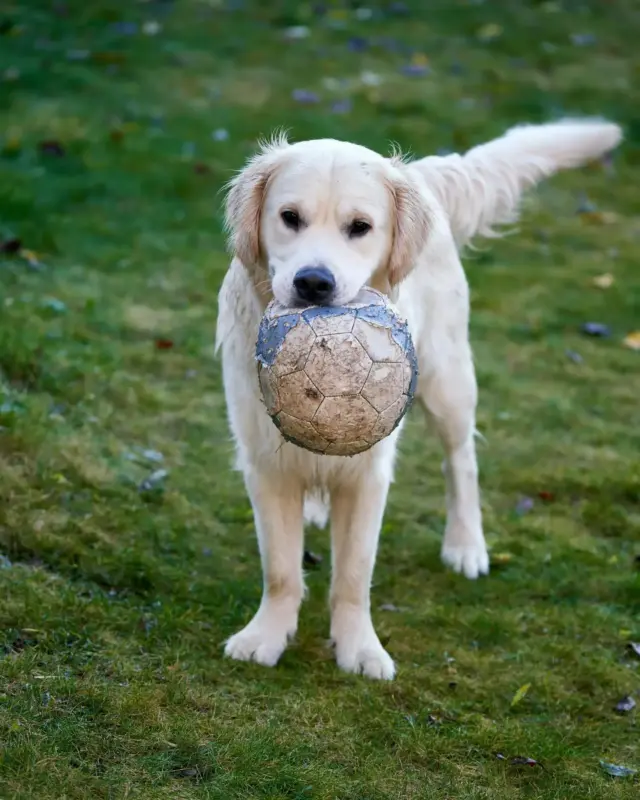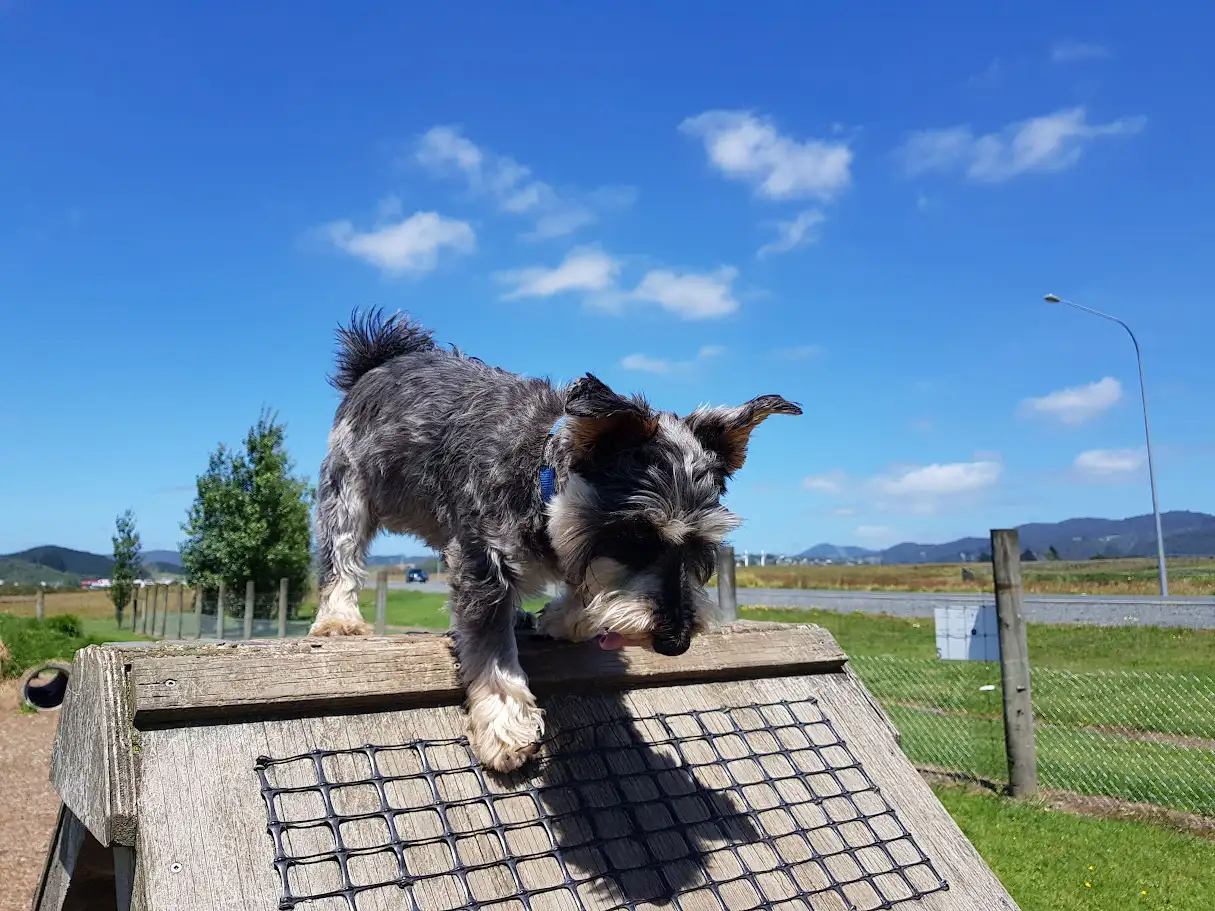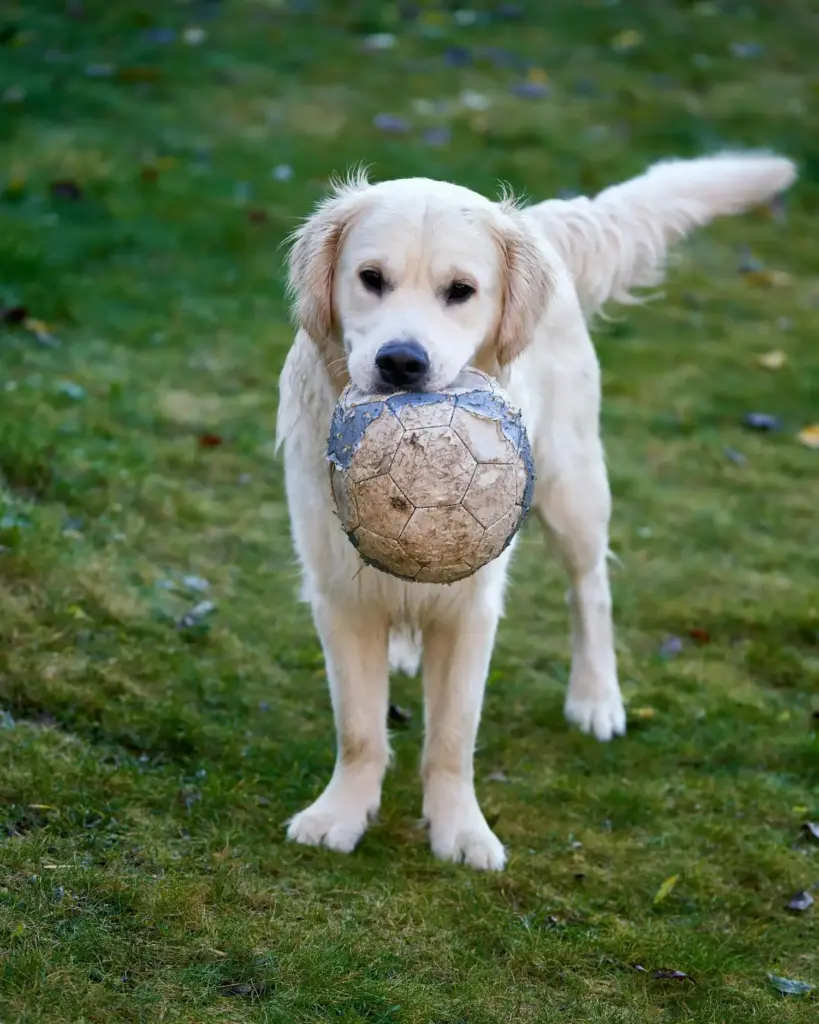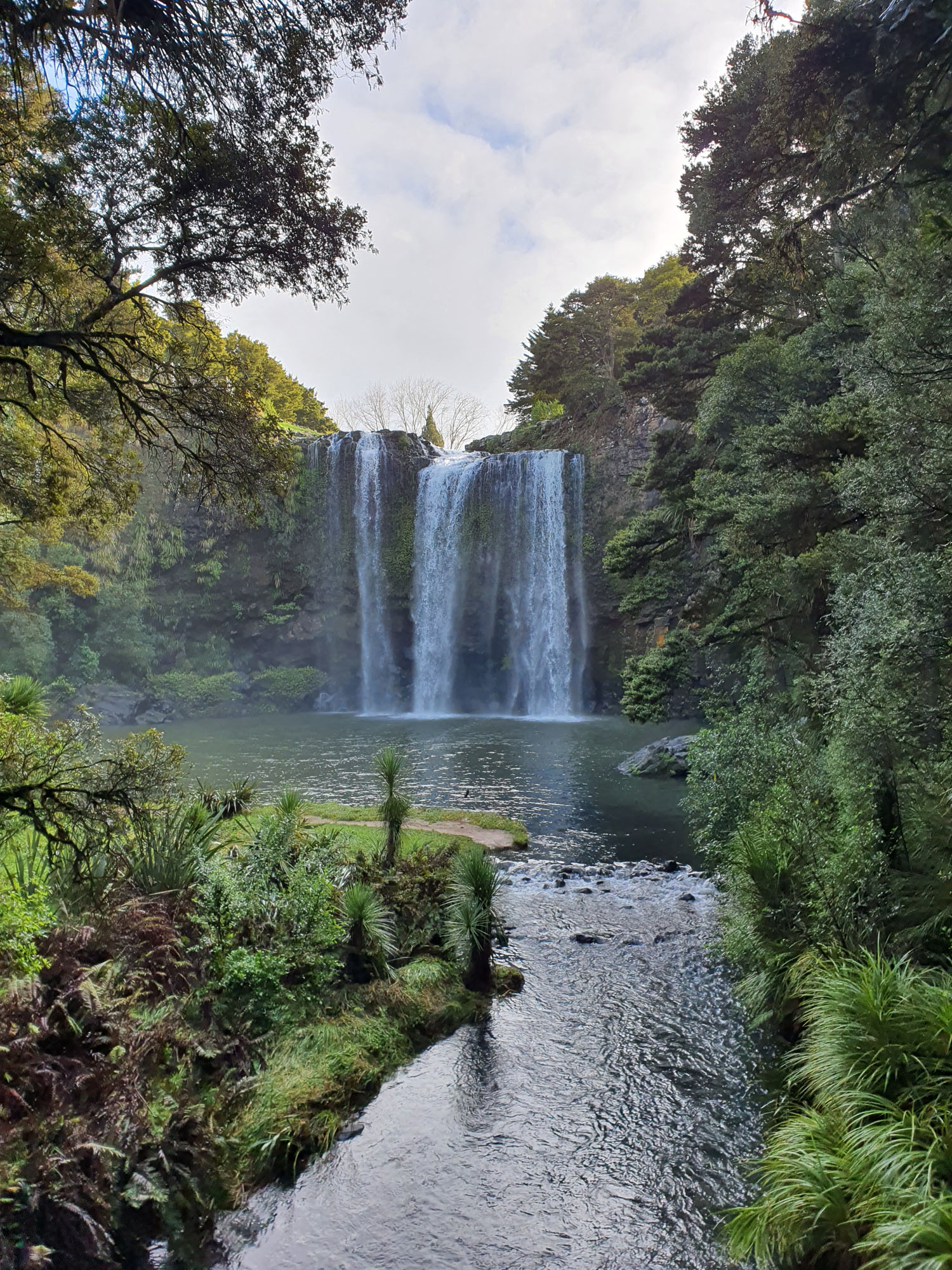Whangārei Dog Agility Park is a purpose-built off-leash facility where dogs of all sizes can run, play, and socialise in a safe, fully fenced environment. Located within William Fraser Memorial Park, this agility park provides dedicated space for your four-legged friend to burn energy while you relax on the benches or meet other dog owners. Whether you have a bouncy pup learning the ropes or an older dog who enjoys a gentle potter, Whangārei Dog Park offers a welcoming space that’s free to use year-round.
Location
The dog park is on Pohe Island (not an island any more), a large recreational hub that’s transformed from its former life as the district’s landfill into a 54-hectare community space. The park is positioned alongside the Hatea River, about 2km (1.2 miles) from Whangarei’s Town Basin, making it a short drive from the city centre or a short diversion from your walk around the Hatea Loop track.
Pohe Island has become one of Whangarei’s most popular recreation destinations, with the dog park sharing the space with the destination playground, skate park, BMX tracks, bike park, sports fields, and walking trails. The Hatea Loop walkway runs along the edge of the dog park, connecting it to the Town Basin and making it part of a larger network of paths that are popular with walkers, runners, and cyclists.
The dog park occupies the eastern portion of the park, positioned between Dave Culham Drive and the eastern boundary. Its location means you can easily combine a dog park visit with other activities, whether that’s grabbing a coffee in town, taking a stroll along the waterfront, or letting the kids burn off energy at the playground while your dog does the same.
Getting There and Parking
The dog park is straightforward to reach from anywhere in Whangarei. From the city centre, head south on Riverside Drive and turn onto Dave Culham Drive, which provides direct vehicle access to the dog park entrance. The drive from the Town Basin takes about five minutes.
If you’re coming from other parts of Whangarei, Riverside Drive is your main route. The park is well signposted, and GPS coordinates will take you directly to the dog park car park at Dave Culham Drive, Parahaki.
Parking at the dog park is free and located right beside the facility in a gravel car park. There’s room for a good number of vehicles, including space for those with boat trailers if you’re combining a dog park visit with activities on the river. The car park rarely fills completely, though weekends and after-work hours between 4pm and 6pm tend to be the busiest times.
If the dog park car park is full, additional parking is available at other William Fraser Memorial Park entrances off Riverside Drive, though you’ll need to walk a short distance to reach the dog park.
The Dog Park: What to Expect
The Dog Park is a fully fenced, purpose-built facility designed specifically for dogs to exercise, socialise, and have fun off-leash. The park covers a substantial area, giving dogs plenty of room to run and explore without feeling cramped.
The surface is mostly grass with several flat gravel paths running between different areas of the park. The grass is generally well-maintained, though after heavy rain or during winter months, some sections can become muddy. The council periodically closes the park for maintenance, particularly drainage improvements and grass regrowth, so it’s worth checking their Facebook page if you’re planning a special trip.
Access to the park is through double-entry self-closing gates, an important safety feature that prevents dogs from escaping while you’re entering or leaving. The gates create an airlock-style entry system, meaning one gate closes before the other opens, giving you time to get your dog under control before entering the main park area.
The fully fenced perimeter means you can relax knowing your dog can’t run off, though you must keep them supervised at all times. The fencing is secure and high enough to contain most dogs, though owners of known fence-jumpers should remain vigilant.
Facilities and Features
The dog park is well equipped with facilities that make visits comfortable for both dogs and their humans.
Agility Equipment:
The park includes six different play structures designed specifically for dogs. These agility features provide mental and physical stimulation and include:
- Tunnels for dogs to run through
- Ramps and raised platforms for climbing
- Weave poles for dogs to navigate
- Hurdles and jumps for active play
- A shallow bath structure (about 20cm or 8 inches deep) where dogs can splash and cool off
Not every dog will use the agility equipment (I’m looking at you… Pugs), and that’s fine. Some dogs prefer to simply run, wrestle with friends, or sniff around. The equipment is there for dogs who enjoy that type of play, but there’s plenty of open space for dogs who want different activities.
For Dog Owners:
- Two covered shade structures providing shelter from sun and rain
- Picnic tables and park benches scattered throughout the park
- Drinking fountain for humans
- Water bowls for dogs at multiple points
- Plastic bags and rubbish bins for cleaning up after your dog
- Communal balls for play (though bringing your own toys is recommended)
The shade structures are particularly welcome during summer or if you’re spending extended time at the park. The seating is positioned to give you good sightlines across the park so you can keep an eye on your dog while chatting with other owners.

Rules and Dog Park Etiquette
The Pohe Island Dog Park operates under Whangarei District Council’s Dog Control Bylaw and has specific rules to keep the space safe and enjoyable for everyone.
Basic Rules:
- Dogs must be supervised at all times
- Dogs must be off-leash inside the fenced area but under your control
- Pick up after your dog immediately and dispose of waste in the bins provided
- Bring a leash with you, even in the off-leash area, in case you need to intervene
- Close all gates securely behind you
- Children must be supervised by adults
- No dogs in season (on heat) are allowed in the park
- Aggressive dogs must be removed immediately
Good Dog Park Etiquette:
Beyond the official rules, following good dog park etiquette makes the experience better for everyone.
Watch your dog’s behaviour constantly. If your dog is bullying, mounting, or bothering other dogs, intervene. Not every dog enjoys rough play, and it’s your responsibility to ensure your dog isn’t making others uncomfortable.
If your dog isn’t enjoying themselves, leave. Some dogs don’t like dog parks, and that’s okay. If your dog is frightened, overwhelmed, or hiding behind you, the park isn’t the right environment for them.
Don’t bring food into the park. This can cause resource guarding and create conflict between dogs. Save treats for outside the park or use them very discreetly for training.
Pay attention to pack dynamics. If a group of dogs is getting overexcited or play is escalating, step in early. It’s easier to prevent problems than deal with a dog fight.
Keep young puppies’ visits short. Puppies under four months can be overwhelmed by adult dogs and rough play. Consider visiting during quieter times and keeping early visits brief.
What Makes It Special
Pohe Island Dog Park was one of the first purpose-built dog parks in Northland when it was established in 2008, and it remains one of the best in the region. The park fills a genuine need in Whangarei, where many residential properties don’t have large yards and city parks generally require dogs to be on-leash.
The park has been developed and improved over the years thanks to the efforts of a volunteer committee who work to enhance facilities. In 2015, Bunnings Warehouse contributed staff to plant 25 trees and shrubs, adding natural elements and creating more shade. The committee continues to fundraise and advocate for improvements, with regular drainage upgrades and maintenance ensuring the park stays in good condition.
The agility equipment sets this park apart from a simple fenced field. Dogs who enjoy physical challenges can work their way through the obstacles, which provides mental stimulation alongside physical exercise. It’s also a good space for training and building your dog’s confidence in a controlled environment.
The social aspect shouldn’t be underestimated. Dog parks create community, and Pohe Island is no exception. Regular users often develop friendships, and dogs make their own social circles. Many owners schedule their visits to coincide with their dog’s friends, creating regular play dates that dogs look forward to.
The park’s location within the larger William Fraser Memorial Park network means you can combine activities. Walk the Hatea Loop before or after the dog park, grab a coffee in town, or let the kids play at the playground while you’re nearby with the dog.
Nearby Attractions and Activities
Pohe Island’s central location and position within William Fraser Memorial Park means there’s plenty to do nearby.
Hatea Loop Walkway:
This 4.2km (2.6-mile) shared pathway circles through Whangarei’s waterfront area, connecting the Town Basin, Pohe Island, and surrounding areas. The loop includes the Canopy Bridge (Te Matau a Pohe), a striking sculptural bridge that’s become a Whangarei landmark. The walkway runs right alongside the dog park fence, so you can walk the loop before or after your dog park visit. Dogs must be on-leash on the shared pathway.
Town Basin:
About 2km (1.2 miles) north, Whangarei’s Town Basin offers cafes, restaurants, and a marina atmosphere. It’s a pleasant walk or short drive, and several cafes have outdoor areas where dogs on leashes are welcome.
Other Pohe Island Facilities:
The destination playground on Pohe Island is one of Northland’s largest and most inclusive play spaces. While dogs aren’t allowed in the playground area itself, families can visit the playground before or after the dog park.
The skate park and BMX tracks attract riders of all skill levels, and the bike park includes pump tracks and skills areas. Sports fields host local football and rugby games, and there are picnic areas throughout the park.
Other Whangarei Dog-Friendly Spots:
If you’re looking to vary your dog’s outings, Whangarei offers other options. The Hatea River walk to Whangarei Falls (starting from A.H. Reed Memorial Park) is a beautiful 30-minute one-way walk through native bush. The walk to Whangarei Falls is on-leash but rewarding, with the 26m (85-foot) waterfall providing a scenic destination.
Several beaches in the district allow dogs off-leash year-round or during certain times. Rules vary by location and season, so check the Whangarei District Council website for current regulations. Check out our Guide to dog-friendly beaches in Whangarei.
Practical Tips for Visiting
What to Bring:
- Leash (required even in off-leash areas for arrival, departure, and emergencies)
- Poo bags (though provided, bringing your own ensures you won’t run out)
- Water for your dog if visiting during hot weather
- Towel if your dog enjoys the water feature or if conditions are muddy
- Your own balls or toys, as communal toys can spread germs
- Patience and a sense of humour
Best Times to Visit:
Early morning visits tend to be quieter and cooler during summer. This can be ideal for dogs who are nervous around other dogs or for puppies having their first dog park experiences.
After-work hours (4pm-6pm) are the busiest times, with the most dogs present. If your dog loves socialising and playing in groups, this is when they’ll find the most friends.
Weekends are moderately busy throughout the day, with the highest numbers mid-morning and mid-afternoon.
Quieter times include weekday mornings and early afternoons, rainy days, and winter months. If your dog prefers calmer environments, aim for these periods.
Seasonal Considerations:
Summer brings more visitors and warmer weather. The water feature becomes popular for cooling off, and the shade structures are well-used. Arrive early on hot days, and be cautious about ground temperature; gravel and paths can become very hot.
Winter sees fewer visitors, and the park can be muddy after rain. Check the Whangārei Public Dog Park Facebook page before visiting if there’s been heavy rain, as the park occasionally closes for maintenance during wet periods.
Safety and Health:
Ensure your dog is up to date with vaccinations before visiting dog parks. Close contact with other dogs means diseases can spread if dogs aren’t properly vaccinated.
Check your dog for ticks after visits, particularly in summer and autumn. Ticks are present in Northland, and dog parks with grass and shrubs can harbour them.
Bring water for your dog on hot days, even though water bowls are provided. Not all dogs like drinking from communal bowls.
If your dog has a condition that requires limited exercise, keep visits short and monitor their activity level.
Important Reminders
Kiwi Safety: Dogs are the number one killers of adult kiwi in Northland. While this isn’t directly relevant at Dog Park, it’s worth remembering if you’re exercising your dog anywhere in Northland’s bush or rural areas. Keep dogs on-leash in areas where kiwi live, and consider kiwi aversion training if you frequently visit bush areas with your dog.
Registration: All dogs in Whangarei must be registered with the council. Registration helps fund dog control services and ensures lost dogs can be returned to their owners. The dog park is a public facility, and dog control officers can and do check registrations.
Responsibility: Dog owners are responsible for their dog’s behaviour at all times. If your dog injures another dog or person, you can be held liable. If your dog causes damage or creates a nuisance, you may face fines or other consequences. Being a responsible dog owner means supervising your dog, controlling their behaviour, and leaving when necessary.
In summary
Whangārei Dog Park serves an important role in Whangarei’s community, providing a safe space where dogs can be dogs and owners can connect with other dog lovers. It’s not fancy, and it won’t suit every dog, but for those who enjoy it, the park becomes a regular part of life.
The park works best when everyone follows the rules, watches their dogs, and treats other park users with respect. Dog parks can be wonderful or awful depending on the behaviour of the humans present, so taking responsibility for your dog and intervening when needed makes the experience better for everyone.
If your dog loves running, playing with other dogs, or tackling agility challenges, Whangārei Dog Park offers all of that in a secure, purpose-built environment. If your dog isn’t a dog park dog, that’s fine too; Whangārei has plenty of other places to walk and exercise on-leash.
For many Whangārei dogs and their owners, the Dog Park is a favourite daily destination. The wagging tails, happy barks, and tired dogs heading home after a good play session are testament to how valuable this space is for our local dog-owning community.


